Magyar
Magyar Bow
No fully intact ancient Magyar bows have been recovered from burials and cemeteries in the Eurasian steppe however, their rough shape could be discerned from thin bone plates which were used in the construction of the bow, as a means of adding rigidity and strength to the handle as well as the siyahs or horns (szarv in Hungarian).
The bow itself, being composed of organic material had decomposed yet the horn plates which reinforced the tips and handle of the bows had survived relatively intact. These horn plates on the Magyar bow gave archeologists and military historians the means to discern the shape of the infamous weapon.
CLICK HERE TO BUY A MAGYAR BOW!
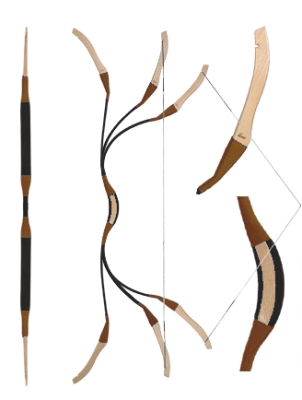
What Do We Know About Magyar Bows?
Károly Cs Sebestyén first proposed the idea that these bone plates had in fact been used to stiffen and reinforce the ears and handle of ancient Magyar bows. After this discovery, it became obvious that the Hungarian bow was an Asian reflex bow. Sebestyen tried to define the exact form of the bow, which was difficult since at this period no drawings of the graves were made, therefore the original position of the plates was not known. The first reconstruction had to be patterned after Asian bows still in use in that time.
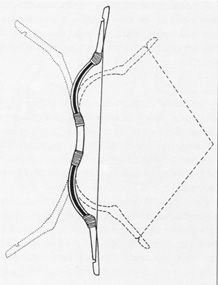
Sebestyen’s writings caught the attention of the Hungarian sociologist Fabian Gyula, who became fascinated by the Magyar bow and decided to build a working replica of the bow. After building several bows he found that the best material for the core of the bow was maple. He used deer sinews for the backing, horn of the Hungarian gray cattle for the belly, and deer antler for the bone plates. Most of his results supported the reconstruction of Sebestyen, the only difference between their reconstructions was the form of the unstrung bow. Fabian built a less reflexed bow. This reduces the risk of limb twist, but also the efficiency of the bow.
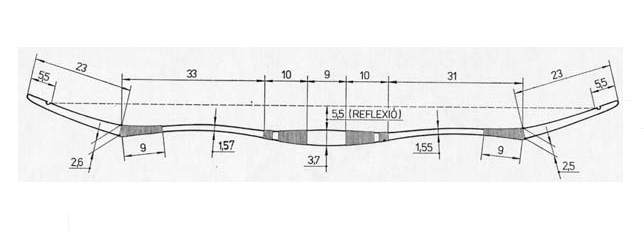
Magyar Bows in the Present Day
With the advent of the reenacting movement in Hungary in the early 1990s, a rapidly growing demographic of modern Hungarian society generated interest in the weapons of the ancient Magyars. Many of these people are deeply attracted to the idea of the powerful Magyar bow, weapon of the ancestors, creating identity through triumphant history. This gave birth to the revival of horseback archery, bow making, and archery in general. As a result, The Magyar bow became one of the most important symbols of national pride and commitment. Today, many independent enthusiasts and manufacturers create Magyar bows of all sorts. Some stick to traditional materials and others have used modern substances such as fiberglass to make bows of ancient Magyar design, but with the ruggedness and reliability of new materials.
CLICK HERE TO BUY A MAGYAR BOW!
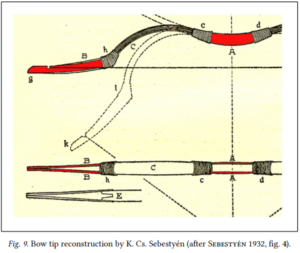
Traditional Construction
Pieces of wood spliced together in sections comprised the core of the bow. Glue from animal sources, such as fish bladders held together with the layers. Humidity and moisture can weaken the adhesive used to bind the various materials of the bow together. Great care must be taken to keep them dry. The ancient Magyars most likely would not have enjoyed hunting or fighting in the heavy rain. Sinew, horn, and the other important components were used in the construction of Magyar bows. Horn from cattle, similar to the modern Hungarian Grey would be added to the belly of the bow, and finally, layers of sinew were added to the back of the bow. A sheath of bark or leather would finally be wrapped around to form the finished product.
The Hungarian Bow Foundation (Magyar Íj Alapítvány), outlines the parameters which establish a bow as a true Hungarian or Magyar bow.
http://www.magyarij.hu/en/hungarian-bow/parameters
Only such bows may be called a Hungarian Bow, which:
Was either made based on an actual 9-11th century bow remnant, or which was fabricated based on the stated and below description general parameters (shape, relation, size) of an analysed 9-11th century Hungarian bow. This is all paired by a defined shape, material and fabrication technique.
- the bow is built with non-contact ears (without string bridges),
- the ears and the grip are typically stiffened with plates,
- the plates of the bow should typically be fabricated of red deer antler.
- the total length of the bow, measured on the belly side is no more than 1500 mm (the distance between the ear-tips, unstrung)
- the ear plates’ length is a minimum of 220mm, but does not exceed 280 mm,
- the ear plates cover the ear from the knee to the tip
- the ear-forehead (above nock) height of the plates are a minimum of 40mm
- the minimal length of the grip plates is 100mm, but no more than 200mm.
- the angle of the grip is no more than 180°,
- when the bow is strung, the angle of the ears is no more than 45°,
- the width of the limbs is no more than 45mm,
- the string of the bow should be made of natural material,
- for coating, protecting the bow, only natural material should be used (e.g. birch bar, skin),
- the structural elements of the bow shall not contain artificial materials (e.g. synthetic glue).
Exceptional cases
The bow should be named/titled with an additional adjective, which is material doesn’t comply with the definition or the parameters (e.g. contain artificial material). In this case the bow shall be called “Hungarian shaped” or “Hungarian form”.
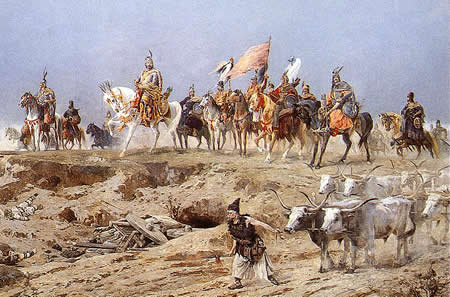
Where Did The Magyars Come From?
Magyar is what people of Hungarian ancestry call themselves. The modern country is called Hungary in English, because the Huns, under Attila, used the plains of Hungary as a base for their raids further west. The Magyars belonged to a confederacy of nomadic tribes similar to that of the Huns. They rode into Europe to raid and pillage for centuries before eventually settling in present-day Hungary, converting to Christianity, and adopting the feudal structures of western Europe. The connection between the Huns and Magyars is noted in the myth Magyars use to explain their origins. It is called the legend of the white stag.
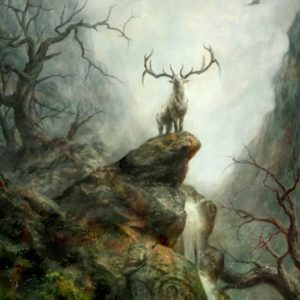
Great White Stag
Many thousands of years ago, somewhere in central Asia, there was a great empire whose ruler was the giant hunter, Nimrod. He had twin sons, named Hunor and Magor. The former would become the ancestor of the Huns and the latter of the Magyars. One day, Nimrod’s sons were on a hunt when they caught sight of a wonderful stag, shining and glittering. The brothers gave chase and the stag led them westwards across vast lands, eventually reaching a scenic and bountiful country. The stag then vanished into a lake and the twins were very saddened by its disappearance.
Brother Nations
They requested their father to build a temple near the site where the stag was last spotted. The brothers lived in the temple and eventually explored the surrounding area. While surveying the countryside one morning, they heard the sound of enchanting music playing and after following the sounds to the source, they beheld two maidens bathing in a stream who the two warriors took as brides. The Huns would become the descendants of Hunor and the Magyars of Magor.
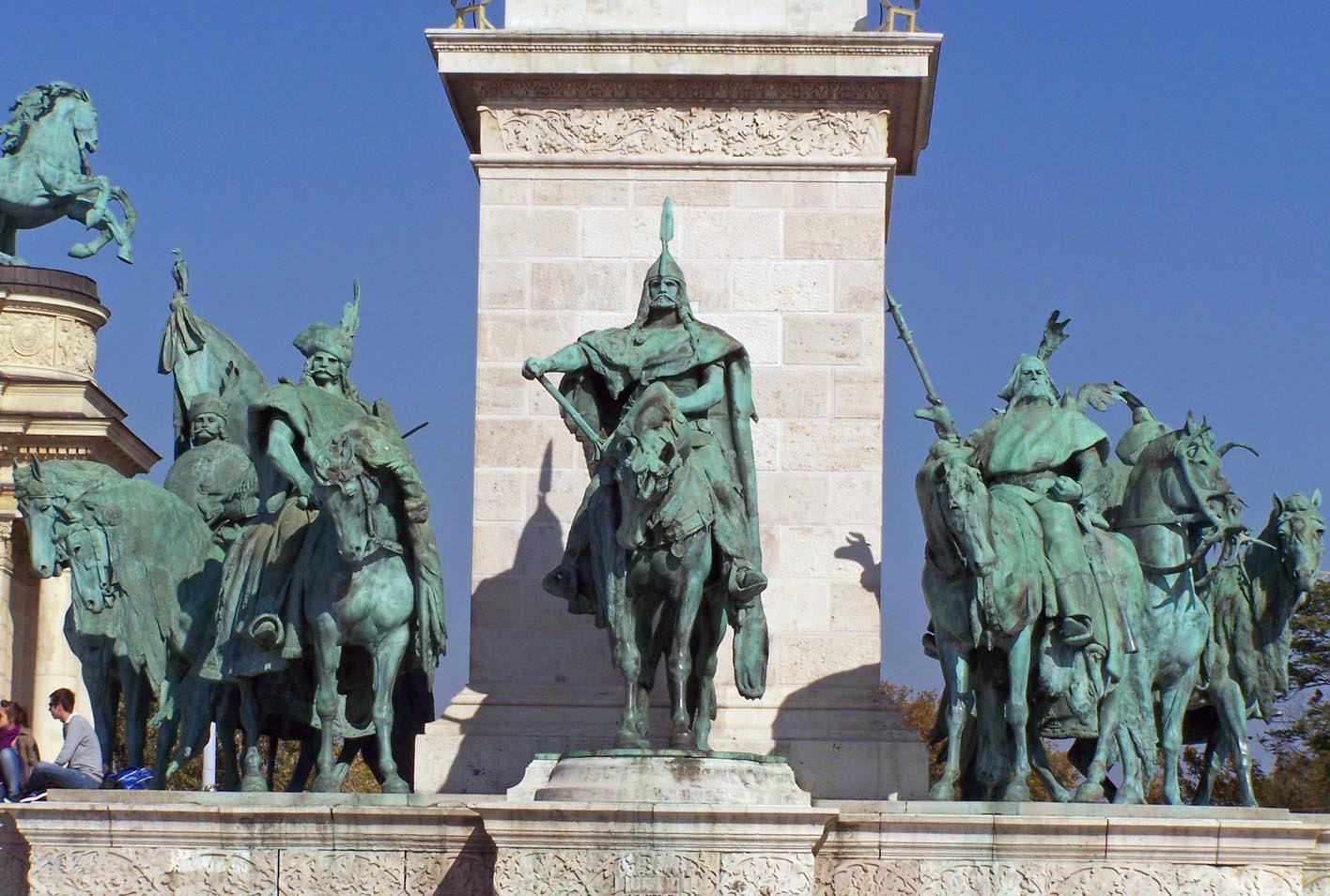
Blood Oath
The Magyars were part of the last great Pagan migrations and invasions of Western Europe and they arrived in their new homeland in the 9th century AD as a loose confederacy of seven tribes (Jenő, Kér, Keszi, Kürt-Gyarmat, Megyer, Nyék and Tarján). Arpad who could trace his lineage to that of Attila centuries earlier was chosen as their leader. The leaders of all seven tribes had cut themselves, allowing their blood to collect and mix in a vessel from which they all drank. This pact was known as the blood oath, which bound the fate of the tribes together for all time.
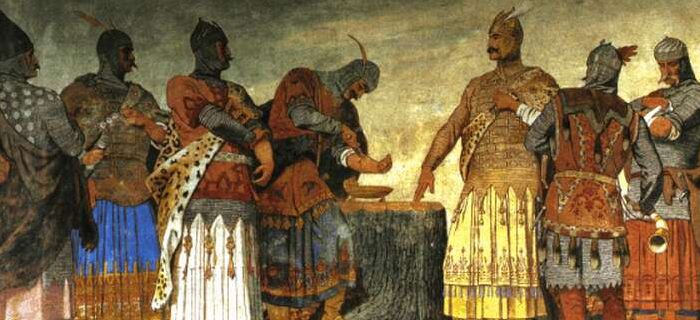
Magyar Warrior
The raiding and pillaging of the Magyar tribes in Western Europe enticed the Byzantine Empire to pay them a yearly tribute. The Byzantine Emperor Leo The Wise had earlier used Magyar horsemen as mercenaries against in the Bulgar-Byzantine war of 894-896. The Magyars, like the Huns and Scythians before them, had grown wealthy from war, especially from trading slaves to their powerful neighbors.
The military tactics employed by the Magyar tribes were similar to that of all other Eurasian Nomads; long-range arrow showering feigned retreats, ambush and surprise attack. Their blacksmith’s manufactured their slightly curved sabers, but their main weapon was their recurved, bone re-enforced, Magyar bows.
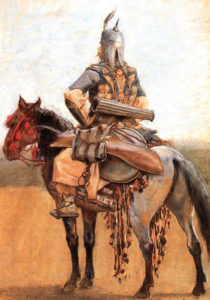
Magyars in the Middle Ages
Eventually, it was realized that the traditional way of life of the Magyars, based primarily on raiding and pillaging of sedentary peoples, could not be sustained. The process of integrating into Western European society culminated in the coronation of the first Christian King of Hungary St. Stephen I.
There has been a recent revival of horse archery thanks mainly to the work of Lajos Kassai. He is responsible for the spread of horse archery in Hungary and Europe, as well as North America. He invented the rule system for the sport in the 1980s and went on to found several schools around the world as well as establishing a number of world records related to horse archery.
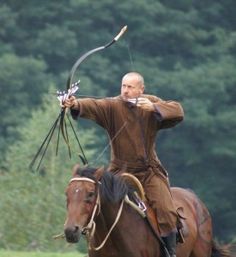
CLICK HERE FOR BOOKS